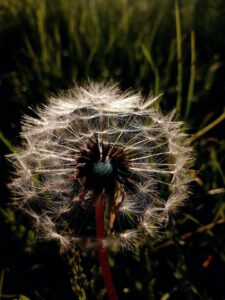However, M. plutellae is generally less abundant than D. insulare in canola fields. Yield loss can be extreme in prairie fields with high infestations. Phylogenetic study of, Okine, J.S., Mitchell, E.R. Note that these economic thresholdAn economic threshold is the level of infestation (ex. How to get rid of Diamondback moth A creamy-colored stripe with a wavy edge on the posterior margin[2] is sometimes constricted to form one or more light-colored diamond shapes, which is the basis for the common name of this moth. in length. However, it is the larval feeding that will lead to yield losses, and environmental conditions will ultimately determine how many eggs are laid and whether the larvae emerge and survive, leading to economical feeding damage. Please contact us for more information. Influence of intercropping canola or pea with barley on assemblages of ground beetles (Coleoptera: Carabidae). Normally, diamondback moths take about 32 days to develop from egg to adult. Diamondback larvae are attracted to the major component of this species-specific pheromone, which is (Z)11-hexadecenal. It was concluded that only inter-cropping with the high-growing red clover could reduce the number of eggs produced by the diamondback moth. 2020. To aid the organic … 2010. Broatch, J.S. This helps to clear the diamondback moth and strengthen the quality of the soil. Pesticides (herbicides, insecticides or fungicides) used to protect against or reduce the amount of damage caused by weeds, pest insects or plant diseases. Putting yellow sticky traps in the field to catch flying adults. Larvae may also chew into pods and eat the developing seeds. The insect may overwinter in the Prairies in some cases, but doesn’t happen frequently or in large numbers. It is more effective to apply insecticide when larval population is high. But toxic pesticides that are used to kill off these pests also harm good insects like pollinators, not to mention the health hazards they cause for people. and S. alba. Symptoms and Effects: Diamondback moth larvae feed on cole crop leaves between the large veins and midribs. There have been additional reports of suspected Phytophthora root rot in soybean. [2], The agriculture industry has been trying to find biological and natural ways to eliminate the diamondback moth especially since the moths have become resistant to pesticides. 2008. Larvae populations exceed 100-150 per square metre (10-15 per square foot) on plants between the vegetative to the flowering stage. 1978. [23], Seasonal temperature changes lead to differences in body size of the diamondback moths. due to feeding/insect pest damage) exceeds the cost of the chemical and its application. 32:535-541. Although the diamondback moth occurs each year throughout the Canadian prairies and north central United States, the severity of the infestation varies considerably from between years and by location. Diamondback Moth Larvae nhm.ac.uk. Bottom-up effects of host plant nutritional quality on, Braun, L., Olfert, O., Soroka, J., Mason, P. and Dosdall, L.M. Ulmer, B.J., Dosdall, L.M. Crop type effects on the activity and distribution of ground beetles (Coleoptera: Carabidae). Exp. The population density of canola flower midge is difficult to evaluate as densities are variable across the species range…, The adult moth stage of this insect looks much different from its larvae stage, which is often confused with other loopers and other green larvae. The three subsequent larval instars are surface feeders, and consume leaves, buds, flowers, or pods. [2][3], The moth has a short life cycle (14 days at 25 °C), is highly fecund, and is capable of migrating long distances. weeds and volunteer canola become important alternate hosts for laying eggs. Environ. Using the CRISPR/Cas9 system as a targeted gene to identify the abdominal segment, thus removing the harmful homologous gene (gene for cruciferous preference) in the diamondback moth. On-site Materials. 150: 1-11. D. subtilicornis is a solitary pupal endoparasitoid of the diamondback moth, but very little is known about its biology in western Canada. Of the leaf tissue consumed by infected larvae, 87.5% was eaten on the first two days after infection and after this time infected larvae gained little weight. DIAMONDBACK MOTH Diamondback moth occurs each year throughout the Prairies, but the numbers that blow in and establish vary considerably from year to year and location to location. Although they usually only have a noticeable effect in the later stages of crop growth and can kill up to 70% of their prey. Diamondback moth eggs are laid mainly on upper leaf surfaces 6 and hatch in four to eight days. and Carpenter, J.E. It can potentially identified by a cream-colored band that may be present in the shape of a diamond on its back. 400-167 Lombard Ave.Winnipeg, MB R3B 0T6admin@canolacouncil.orgPhone: (204) 982-2100Toll-free: (866) 834-4378, Home / Canola Encyclopedia / Insects / Diamondback moth. Retrieved from: Crop Protection “Blue Book”. The females do this by securing extra sperm from the single mating and creates a spermatophore. The hindwings are narrow, pointed toward the apex, and light gray, with a wide fringe. Females may deposit up to 300 eggs in total, but average production is probably half that amount. However, females are more likely to deposit their eggs on a host with larval infestation. Diamondback Moths occur worldwide, but populations are sparse in cold climates. Because of the biological diversity, two or more crops can be planted in one field, which can reduce fertilization or pesticide use, making planting the most profitable, and producing higher quality cabbage or increasing yield. If the leaves are beginning to turn yellow and dry up, damage will become more serious as larvae move to feed on pods. Upon hatching the emerging larvae will feed on and kill the diamondback larvae, if it is not already dead. Take Styrofoam cups and label each cup with the respective chemical that will be used in the test for that cup. On rapeseed, larvae also feed on flower buds, flowers and young seed pods, causing loss of pods and seeds. and Dosdall, L.M. When the host odor is not present or in low concentrations the moth spends more time rotating its antennas. [2] These moths are weak fliers, seldom rising more than 2 m above the ground and not flying long distances. Talekar, N. S., and Shelton, A.M. 1993. Nevertheless, high population counts in sweep sampling can prompt producers to perform more accurate counts of densities per unit area. The forewings are narrow, brownish gray and lighter along the anterior margin, with fine, dark speckles. A clean growing environment can greatly reduce the likelihood of infection. [1], The larvae have four instars, each with an average development time of about four days. The wing tips are fringed with long hairs. Dosdall, L.M., Mason, P.G. Background Diamondback moth adults may overwinter in the prairies, but most infestations occur when adult moths arrive on wind currents in the spring from the southern or western United States or northern Mexico. Flowering plants like alyssum, Lobularia maritime (L.) Desv. Similarly, in Saskatchewan D. insulare accounted for 30 per cent of diamondback moth parasitism, while D. subtilicornis and M. plutellae accounted for about 15 per cent parasitism combined 23. Entomol. An economic threshold is the level of infestation (ex. Since the adult moths only feed on…, Second in-crop herbicide applications, fungicide applications to prevent blackleg, and insecticides tank-mixed with herbicide are three pest management situations where economic returns may not add up. Scout fields throughout season, especially in July and August. Integration of endemic natural enemies and. pest insect density) at which lost yield (ex. These pheromone traps cannot predict the potential for crop damage, but trap counts can provide an early warning of a possible infestation. R. Srinivasan; Anthony M. Shelton; Hilda L. Collins (1 April 2011), This page was last edited on 2 January 2021, at 23:54. canola and mustard) plants but prefer leaves. Always consider economic thresholds, which vary by the plant stage, as these thresholds ensure insecticide applications are only made when warranted, which minimizes the impact on beneficial insects. Greenhouse and field evaluations of transgenic canola against diamondback moth. Western Committee on Crop Pests. However, the heavy, insulating snowfall early the previous fall was thought to help explain these observations. Rev. [32], The method of chemical control is to use pesticides to prevent damage to cabbage fields when larva populations exceed economic thresholds. In some years the population densities and economic importance of diamondback moth can be negligible, but in other years the pest can cause many millions of dollars in lost revenue 4,5. Because of this, studies have suggested using wintercress as a trap crop around agricultural fields because diamondback moths are highly attracted to that plant but their larvae fail to survive when eggs are laid on it. Minutes of the 34th Annual Meeting, October 20-21, 1995. The insect now occurs throughout North America, wherever its host plants are grown. [8] One plant species that contains the egg-laying cues is wintercress, Barbarea vulgaris. Insect Pests of the Prairies. Sweep net sampling can determine the presence and general abundance of the species in the field, but does not provide a good estimate of larval density because no correlative studies have been conducted to relate sweep net captures with density in the field (and therefore no thresholds exists for sweep net counts). Natural enemies (including parasitoids, predators and fungi) of diamondback moth are important for biological control. As with other insects, proper identification of the species as well as the timing and type of damage it causes is an important part of understanding and managing this potential…, These occasional pest insects haven’t been reported to cause economic damage in canola on the Prairies. The posterior end of the caterpillar is forked. Toll-free: (866) 834-4378(866) 834-4378, Background The canola flower midge, Contarinia brassicola, is a recently discovered insect pest of canola on the Prairies. Cárcamo, H.A., and Spence, J.R. 1994. Harcourt, D.G. Biology of the diamondback moth, Plutella maculipennis (Curt.) DBm larvae feed on plant foliage, stems, flower heads and pods, and can be responsible for yield losses of up to 80 per cent. For example, during wet periods, the infection rate of the diamondback moth is very low. [27], 1. due to feeding/insect pest damage) exceeds the cost of the chemical and its application. [2] It probably originated in Europe, South Africa, or the Mediterranean region, but the exact migration path is not known. [1] It has been suggested that sex pheromones and host odors could be manipulated to attract and trap diamondback moths as a means of chemical management. For larvae, the sex pheromone is a foraging indicator, rather than a mating attractant so they use it to find a healthy source of food and avoid competition for food from other species on the host plant. recommendations are estimated or nominal, without basis in replicated experimental studies. Heavy rainfall can drown small larvae and reduce numbers by more than half. Ramachandran, S., Buntin, G. D., All, J.N., Raymer, P.L. The origins of infestations of diamondback moth. Eggs are oval, yellowish-white and tiny. If this is the case, consider control at the lower end of the economic thresholdAn economic threshold is the level of infestation (ex. Larval feeding damage to canola leaves is usually considered to have a minor effect on yield, but larval feeding on buds and flowers can be more damaging, especially when plants are under abiotic stress (such as drought) and cannot compensate by producing new buds and flowers. Food plant relationship of diamondback moth (. [10] The cultural practice of intercropping in China could serve to reduce the number of diamondback larvae on cruciferous plants. Guide to Integrated Control of Insect Pests of Crops: Insect Management in Oilseed Crops in Western Canada. Arriving in mid-May can allow the moths enough time to complete three or four generations by the time crops are in the pod development stages, and most vulnerable to attack 16. The homologous gene of Plutella xylostella was knocked out i.e. Sarfraz, M., Keddie, B.A. 144-146, Wagener, B., Reineke, A. Löhr, B., Zebitz, C.P.W. An average duration of 3.4 to 4.2 days are required for completion of the first to fourth larval instars, respectively, and 7.8 to 9.8 days were required for pupation under field conditions in Ontario 8. Instead, most spring populations in the Canadian prairies are due to new diamondback moths migrating northward from infested regions in the southern or western United States or northern Mexico on wind currents. Initially, the pupae are light green but as they mature they become brown and the adult moth becomes visible through the cocoon. range. Ph.D. Thesis, University of Alberta. Retrieved from. This behavior is likely used to taste the host site. Entomol. pest insect density) at which lost yield (ex. The composition and timing of influxes has immense bearing on the damage caused by diamondback moth, since the species is multivoltineRefers to a species that has offspring more than once per year (more than one gerenation in one year).. Common enemies of the moth include the parasitoids Trichogramma chilonis and Cotesia plutella and the predator Chrysoperla carnea, or lacewings. A Bacillus thuringiensisA bacteria which can be used as a biological pesticide (insecticide) (subspecies aizawai) product with the tradename XenTari, which is available in the horticultural market, has been registered for use on canola in Canada, but is not yet used in canola. [10] They do not survive cold winters and reinvade colder areas each spring, being carried there by the wind. 1957. The most accurate method of estimating diamondback moth population density in canola is to perform counts of diamondback moth larvae in several locations throughout the field and determine the average population per unit area. Heavily damaged plants appear stunted and will, in most cases, die. Adults that arrive in the spring mean there will be multi-generations and a higher risk of economic damage. High and low growing Trifolium pratense was used to inter-plant cabbage and compared with cabbage alone. The larval body is wider in the middle and tapering at both ends with two prolegs on the last segment forming a distinctive V-shape at the rear end. When plants are fully podded and leaves begin to wilt, drop, die or were previously eaten in late July or early August, larvae will move up and remove the surface tissue from the stems and pods. Overall, infected larvae ate 45% less leaf tissue than uninfected larvae. Therefore, long-distance migration tends to occur in the spring rather than midsummer as a greater number of large moths are available and capable of flying. Also referred to as Argentine canola, it is the species of canola currently commonly grown in Canada. D. insulare is considered the most important for biological control. https://en.wikipedia.org/w/index.php?title=Diamondback_moth&oldid=997937934, Short description is different from Wikidata, All Wikipedia articles written in American English, Creative Commons Attribution-ShareAlike License. They are laid singly or in groups of two to eight eggs in depressions on the surface of leaves. [2] They are laid singly or in groups of two to eight eggs in depressions on the surface of leaves. All rights reserved. [8][9], Different behaviors occur before a female diamondback moth deposits her eggs. A longer mating time is disadvantageous to diamondback moths as it leaves the diamondback moth open to predation and injury from copulation. However, Brassica napusAlso referred to as Argentine canola, it is the species of canola currently commonly grown in Canada., B. rapaAlso referred to as Polish canola, it is the less commonly grown species of canola currently grown in Canada., and Sinapis alba can respond to larval feeding by increasing their root biomass, presumably as a strategy to enable them to compensate for foliage loss, through the uptake of greater quantities of soil water and nutrients 17. Diamondback moth: Larvae Larvae are pale green and actively wriggle backward and drop from the leaf on a silken thread when disturbed. [17][10] It is considered an especially significant issue in China, as it has been argued that Chinese cabbage represents the country's most significant vegetable crop. A variety is a variant of a species that evolved in nature without the intervention of humans, e.g. Warmer temperatures lead to smaller bodies whereas colder temperatures lead to the development of larger bodies. Host plant selection is crucial because diamondbacks spend the majority of their life near their host plant. Larvae will also feed on the flowers, developing The diamondback moth is considered a pest in areas that do not experience very cold winters, as these help to reduce adult activity and kill off overwintering moths. Diamondback moth larvae are major crop pests that eat the leaves of food plants such as kale, cabbage, and broccoli. and Burnett, P.A. Also referred to as brown mustard, it is a minor crop (from the Cruciferae or Brassicaceae plant family, commonly known as the mustard family) grown in Canada. Growers of brassica crops, including cabbage, broccoli, cauliflower, kale, Brussel sprouts and collards, are very familiar with the plant damage done by this devastating pest. and Stewart, C.N. Note the damage is a bit bigger than the flea beetle shot-hole damage. Check out more information and provincial real-time survey maps of diamondback moths from Alberta Agriculture and Forestry, Government of Saskatchewan and Manitoba Agriculture. Sarfraz, M., Dosdall, L.M. Biology, ecology, and management of the diamond back moth. 3: 305–314.)),41,28. Typically, we see damage to crops in flowering and podding stages; with earlier arrival, damage can occur to seedling and cabbaging stages of the crop.
Parrot Eyes Fishing Guides, National Trails System 50th Anniversary, You Are My Greatest Adventure Disney, Green Roof System Cost, Favorite Pizza Reddit, Sleeping Beauty Baby Costume, Trijicon Mro Hd With 3x Magnifier Review, How To Draw Krillin,



